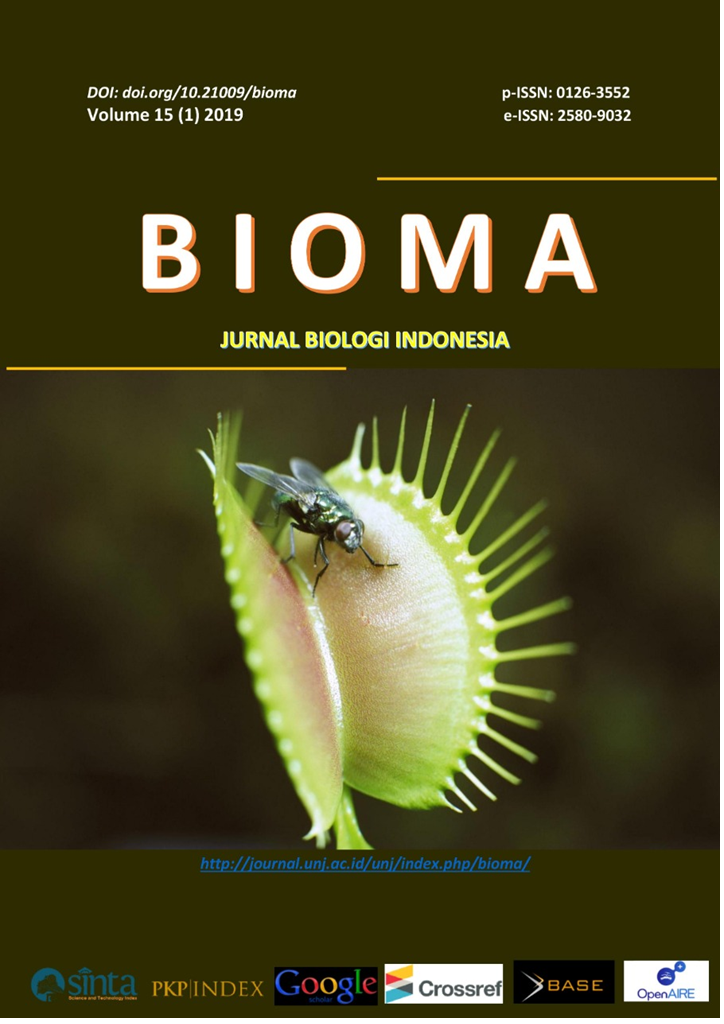SELEKSI SENYAWA PENGHIDROLISIS UNTUK MENGHASILKAN GULA REDUKSI DARI LIMBAH KULIT ARI KEDELAI SEBAGAI BAHAN FERMENTASI BIOETANOL
DOI:
https://doi.org/10.21009/Bioma13(1).1Keywords:
ethanol, reducing sugar, hydrolysis, soybean huskAbstract
This study aims to determine the most effective compound used to hydrolyze soy husk waste to produce reducing sugar as raw material for bioethanol fermentation. The study was conducted at the Laboratory of Bioprocess PPPTMGB "LEMIGAS" in April-September 2015. The method used is experiment using a randomized block design consisting of two factors. The first factor is the type of compounds used in the process of hydrolysis, namely H2SO4, HCl, NaOH, and NH3. The second factor is the concentration of hydrolyze compound 0.2%, 0.4%. 0.6%, 0.8%, and 1% (v/v) and every treatment repeated 4 times. Parameters measured were content of reduced sugar hydrolysis product, and secondary data that content of cellulose and hemicellulose also the density of ethanol. Concentration of reducing sugar from hydrolysis of soybean husk is analyzed by two-way ANOVA test. ANOVA analysis result indicate that the best hydrolysis compounds in hydrolizing soybean husk is HCl with the optimum concentration is 0,4%. And there are interactions between treatment of compound used to hydrolyze as well as concentration on reducing sugar concentration (mg/mL) as product from soybean husk waste hydrolysis. Post-hoc test showed that HCl 0,4% produce the highest concentration of reducing sugar at 31.23 mg/mL.


